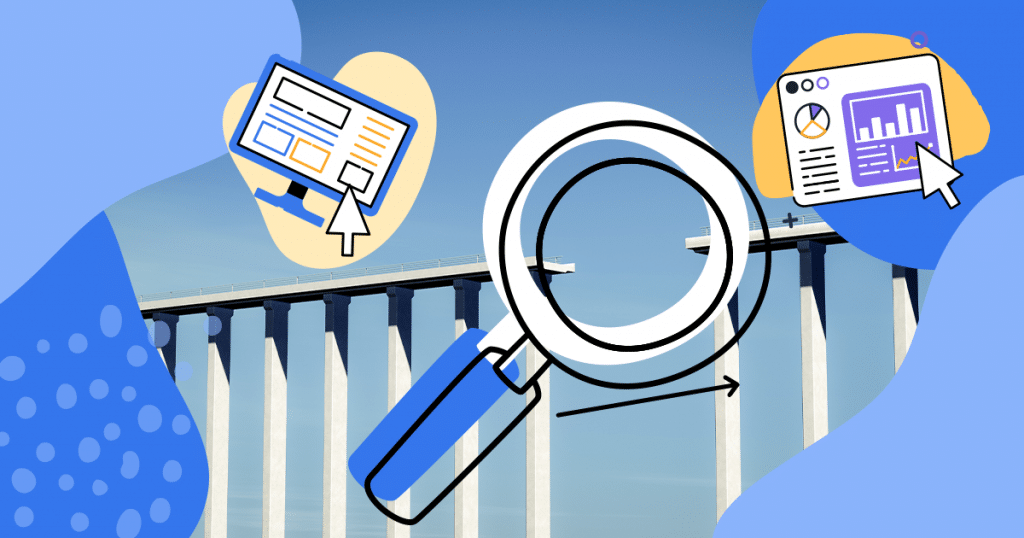It’s safe to say that almost every brand is involved in the content marketing game.
While several years ago you could post content without having to worry about too much competition in your industry, today the race to reach the top of the rankings page is more competitive than ever.
In order to boost your SEO results and ensure that the content you publish is performing as best as it can, you need to take time to plan out your content strategies and your content topics.
To help you achieve your content goals, a strategy called a content gap analysis can be employed to help you refocus your content topics and find areas that are less competitive to publish content about.
- But what exactly is a content gap analysis?
- Why is it important for your brand?
- How do you run a content gap analysis that improves your SEO and search rankings?
In this article, we’ll answer all of those questions and help you improve your content marketing game so that your articles can be discovered by your audiences.
What is a Content Gap Analysis?
Content gap refers to the missing pieces of content that your audience wants to read but haven’t been created yet.
A content gap analysis, then, is the process of discovering exactly what those gaps are and creating a plan that utilizes those gaps in your future content marketing initiatives.
Content gap is primarily focused on the desires and wants of your target audiences.
By taking a look at what types of information they want but are unable to find, you can start to see the gaps between the content you create and the content that users on a web browser are searching for.
You can even think about content gap from the customer’s perspective.
Have you ever entered a specific query in a search engine, only to find that the displayed results answered just part of what you were looking for?
Or maybe it didn’t quite answer the question at all, just a related search? That’s the content gap.
Why is a Content Gap Analysis Important?
There are a few different reasons to invest time into a content gap analysis.
Let’s take a look at what some of those reasons are and why it’s well worth your time to use content gap analysis as part of your content planning.
It Helps You Guide Customers Along Their Customer Journey
We all want to be effective communicators with our customers, and content is one of the best ways to do that.
A content gap analysis can help find areas where more content can be created that matches the flow of a customer’s journey with your brand.
That means that you can help guide customers towards a purchase decision by giving them relevant, timely content that matches exactly the types of questions they are asking at specific points in their journey.
This makes customers happy and ingratiates your brand to them among your competitors.
It Helps You Attract New Customers
Content doesn’t just help your existing leads and prospects move through your pipelines.
It can also help you target new customer bases and audiences that might not know about your brand.
When you can reach those groups by filling in the gaps, they can become part of your sales and marketing funnels and join your pipelines.
It Helps You Rank Better for SEO
Content gaps find areas and topics for content that haven’t been written yet.
That means there is a built-in opportunity for new SEO rankings and improving your overall SEO scores.
You can find the areas of overlap between your content, your competitors’ content, and the content that already exists to pick out specific keywords and rank higher.
While thinking about your content in relation to your competition is a part of a content gap analysis, you should still be focused on the customer and what your new content topics can provide to them.
How to Set Your Content Gap Goals
Before you can start running a content gap analysis program, you first need to set the goals that you want to achieve with your plan.
Think about what you want to end up achieving, what results you want to see, and what metrics you want to track to see if your plan has been successful.
You want to determine what KPIs are going to be most useful in measuring the success of your content gap analysis.
- Do you want to increase leads?
- Do you want to show up higher on search engine results pages?
- Do you want to rank for more keywords than your current approach?
- Do you want to increase website traffic?
By answering these questions you can set yourself up for success and have a plan in place to measure and monitor your content gap analysis.
How Do You Run a Content Gap Analysis?
Every content gap analysis goes through some of the same steps.
Let’s take a look at the process you should follow to run a successful content gap analysis and start finding the areas where you can expand into with your content strategies.
1. Map The Buyer’s Journey
As mentioned above, the buyer’s journey is an important aspect of a content gap analysis.
When you can map out each stage of the buying process and personalize the content and message to each step, you can help your audiences get exactly what they are looking for and guide them along their journey to a purchase decision.
Starting your content gap analysis by working on your buyer’s journey ensures that the gaps you find fit into the existing flow of a customer journey.
Ask yourself what your customers are doing as they become aware of your brand, consider your brand, and make a decision with your brand.
2. Determine What Your Audience Wants
Now that you have the stages of the buyer’s journey mapped, it’s time to take a closer look at what your audience actually wants when they search for information about your industry, brand, or area of expertise.
Ask yourself what the common pain points are in each stage, and what information is needed to answer the questions that are being asked.
You can even ask your current customers what kind of content was most helpful or what they couldn’t find through interviews or surveys.
3. Conduct Keyword Research
With the information you’ve gathered from your customers, it’s now time to take a look at keywords.
Performing keyword research allows you to start connecting the dots between what your customers have told you and what the data from search engines is showing.
You want each piece of content you create to target a keyword, and your keyword research helps you determine which words or phrases are being typed into Google and other search engines.
When you have a list, you can then start working your content plan around those specific search queries and fill in the gaps where there isn’t enough content for a keyword.
4. Take a Look at Your Competitors
Another great way to look at the content gap is to consider the content your competitors are putting out.
Take a look at what type of content your competitors post, then dive in and see what performs the best and where they focus their time and efforts in content creation.
You can use different online tools like BuzzSumo or SEMrush to compare the competitiveness of keywords and see where your competitors rank on specific search terms.
That allows you to see which keywords they aren’t targeting and where gaps can be found in their own content.
5. Analyze the Content on Your Website
While you take a look at your competitor’s sites, you also want to take the same approach and examine your own content.
- Which keywords are you currently ranking for, and which ones are you not performing as well in?
- What types of content are the highest-performing on your site, and which topics do the best with your audiences?
See if your own content fits into the buyer’s journey you just mapped and the keywords you’ve selected through your research. That allows you to find your own content gaps and SEO gaps.
6. Prepare Your Plan
Finally, you can start preparing your new content plan. Take into consideration all the steps you’ve gone through and ensure that you have a strong idea of where to take your content creation process. Then, put your plan into action.
Wrap Up
A content gap analysis helps brands find new areas and topics to rank for that they might not have known about otherwise.
It also helps a brand gain more authority on search engines, steal away competitor traffic, and expand their breadth of knowledge to help their customers.
After all, the goal of any content marketing strategy is to ensure that customers, leads, and prospects all know that your brand is relevant and able to help them answer questions and find solutions to their problems.
If you are a marketer who wants to help your brand grow a successful content marketing program, then check out our blog on content marketing trends.
You’ll learn about the major upcoming trends for 2022 and how you can implement those changes into your own content marketing strategies!









